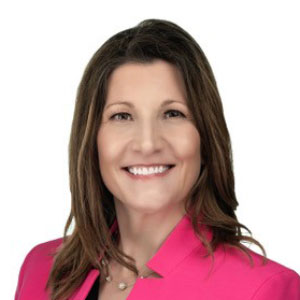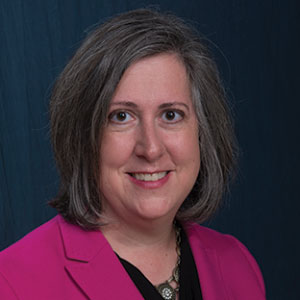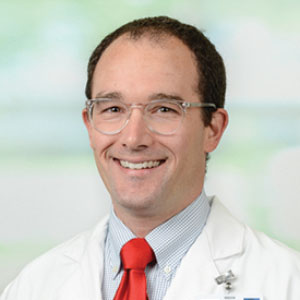The pandemic changed everything — not just in health care. Consumers have changed how they shop, how they buy and what they value. Companies and industries around the world are subsequently scrambling to shift how they operate, how they communicate and how they sell.
As we move through rapid digital transformation and integrate shifting consumer behavior into our marketing and business development, it’s worth taking a few minutes to consider lessons learned from the health care space. After all, this industry didn’t have the luxury of time or backward-looking analysis against established KPIs. Instead, while dealing with the crisis of a lifetime, executives also grappled with the changes we’re all seeing: a need for new ways of communicating, new ways of reaching audiences, and new or updated processes and structures for reimagined ways of working. Massive overhauls occurred over a matter of weeks.
In the end, health care organizations that were quick to embrace transformation — of facilities, of communication practices and of patient experience — learned valuable lessons for the future. Three experts gave us an inside look at the front lines — and we distilled five key lessons all industries can take away as we retool our marketing operations.

Jennifer Carron
is patient experience officer for BJC HealthCare in St. Louis. The BJC system has nearly 31,000 employees and 15 hospitals.

Seona Goerndt
is the director of patient experience for The MetroHealth System in Cleveland. MetroHealth employs nearly 8,000 people. In 2020, MetroHealth cared for 1.4 million patients at its 29 locations.

Dr. Brent McQuaid
a pulmonary/critical care physician with Cone Health Medical Group, served as chief medical officer at the Green Valley Campus in Greensboro, North Carolina, during the height of the pandemic. Cone Health, which serves an area of roughly 1 million people, has more than 100 locations and 13,000 employees.
From the Front Lines
Dial up digital
Telemedicine and FaceTime quickly took over as hospitals filled — but digital transformation requires support and consumer understanding.
Seona Goerndt: In the early stages of the pandemic, we were in a space where patients and the community didn’t know whether or not to come to the clinic or hospital for treatment. And then we got the point where nobody wanted to come in, even when they probably needed to. So, a lot of our service was partnering with our patients to find the right balance and see who needed what type of care, and when and where was best for them to receive it.
If they didn’t have a digital device and needed care, then we would accommodate that with an in-person visit. But we also did a lot of telephone visits because most of our patients had a telephone, but they didn’t necessarily have the capability to do a video visit.
Over time, as we all became more comfortable and we had better information, we were able to start being more flexible in how we offered those services and taking the patient’s preferences into consideration, along with what the best place for care would be to ensure quality and safety of care.
We also set up a program called compassionate care rounding so we could support our patients in their ability to connect with their family members virtually. And we created a safe space on campus for visitors to come if they didn’t have a device or a smartphone they could use at home. We spent a lot of time on that space to make sure that everyone felt as comfortable as they could in a very uncomfortable time.
Remember human connection
Visiting hours changed dramatically but were more important than ever. Those organizations that facilitated connection at any cost were rewarded.
Carron: Once a day, the nurse during the bedside shift report would ask the patient, “Who do you want to connect with the next day? Let’s get them scheduled.” They could connect with one visitor or multiple visitors.
One story that ran here locally was about a local fireman who had COVID. He was intubated and not doing well, so his children’s mom asked for her kids to be on a video call. Soon after, he was making a remarkable recovery. We have multiple stories of amazing transformation in patient outcomes when you involve a loved one. For us, that made it even more important for that virtual connection to be there.
We have one of the largest tele-ICUs in the state, and we have learned many lessons through our virtual visitor program. We partnered with IT, deployed over 300 iPads and created safe connections so that we could use our tele-ICU system for loved ones to communicate with patients safely. We even took it a step further and created a call center for loved ones who were experiencing technical issues getting logged into the visit. This took the stress off the loved one and the clinical team who are not technical experts.
We made it more accessible by expanding virtual visiting hours so that we could get more loved ones in. One patient had her entire congregation on a virtual prayer session while in our care. There’s no way this would have been possible without the virtual visitor program. It’s so important to build connections not just with the patient, but also with their loved ones, because they’re a large part of our care team. They’re the ones who are going to care for the patient outside of the hospital. They’re the ones that help the patient feel safe. They’re an advocate at the bedside.
Manage the message
Early in the pandemic, fear and uncertainty were exacerbated by a lack of knowledge about the virus. Health care leaders prioritized information sharing throughout the community and among their staff, through every channel possible, in order to slow the spread of the virus and misinformation.
Goerndt: One of the first things we did was set up a free COVID hotline for anyone who had questions or concerns, whether they were potentially experiencing a symptom, or what next steps they needed to take to support their health and wellness.
We also maximized the use of our social media. Updates to our website, to our telephone recordings, communicating to our patients through their health care portal, all of this infrastructure was updated to reflect how patients and the community could get help. And we also had a lot of conversations with our local media.
However, some of our patients are in a digital desert. They don’t have access to much technology, so we had to consider different ways to get out information. So, another strategy we had was to work with faith community leadership so they could disseminate important information about the pandemic in their community.
McQuaid: Cone Health dedicated a lot of effort to communicating the three W’s: Wear a mask, wait apart, wash your hands. To our staff, from the get-go, we were very clear that in order to get through this, we have to be careful, and we have to follow the same three W’s here. As leaders, you had to live it. You had to remember to show up and socially distance and wear your mask and wash your hands. So, while we communicated it to the community, communicating it to our 13,000 employees was a big deal too.
Carron: Early on in the pandemic, the major health systems came together to form the St Louis Metropolitan Pandemic Task Force. The region’s health systems, governmental and public health leaders joined together to ensure collaboration for the best possible patient care and coordination of supplies, hospital beds and other critical assets. Any major decisions were made together, including marketing and communications, because we didn’t want our community to get confused or feel like they had to discern between conflicting pieces of information.
The task force played a significant role in keeping everybody well-informed at home, masked up and following guidelines that keep everybody safe. Very quickly, BJC started our marketing campaign: “keeping you safe.” We wanted the community to know that we were making tough decisions to double down on our fight against COVID. Everything that we communicated, we said we were doing to keep people in the community safe.
Goerndt: We also started doing virtual health talks — short, virtual conversations that are available to the community on social media, on topics that are relevant to patients and the community at the time. We built all of these programs based on the feedback from our patients and the community of what their concerns were and how we could respond to them. And these are continuing even now with more up-to-date content.
Having these virtual platforms was really important. We couldn’t have live sessions. We couldn’t have community town halls, which is what we relied on in our community prior to the pandemic. So, we really had to rely on these other mechanisms by which to communicate services that we had available that could help them. And we wouldn’t have been able to get those messages out without the partnership with our marketing team.
Update your structures
The COVID-19 pandemic exploded rapidly and unpredictably. Health care organizations had to embrace equally rapid change. As a result, lessons were learned and changes made that are likely to continue moving forward. That includes the increased adoption of telehealth and a new approach to marketing.
McQuaid: From a health system standpoint, our day-to-day organizational structure for patient placement dramatically improved during COVID. We had meetings every day, where key players from every hospital in our health system would get on a call and we could make important decisions to guide where patients would go. We realized that time was valuable and that we could use it to make our health system more efficient. So, we started using that daily call in a way that has changed how we place patients, so we’re using our resources most efficiently.
Goerndt: We mobilized staff differently during COVID. As the needs of our patients and the organization changed, we were able to flex our care delivery model quickly, whereas probably before the pandemic, we wouldn’t have thought we could move that quickly. And so that is something that we learned from and can continue as things change, as the needs of our patients and our communities change.
Put trust first
Whether during a pandemic or a routine checkup, trust and transparency are paramount for health care providers.
Goerndt: I also think about how we support staff during the most difficult time. We put a lot of infrastructure in place to support our caregivers. That will continue going forward because the hard work they do every day is still hard work they do every day to care for our patients in the community. So COVID presented a great opportunity for us to build off of and carry forward into the future.
Carron: So much of health care is rooted in trust — trust of the initial call or the initial visit, but then also in follow-up care and our recommendations to help keep the patients safe. Health care, in my opinion, isn’t a one-and-done. It’s a relationship built on trust. With COVID, there are a lot of people that continued to have symptoms and after effects for quite some time. And we needed them to continue to commit to receiving care. And we could only do that through that connection, being present, being mindful and truly listening to what the patient is communicating so that we could respond in a way that makes them feel heard, safe and builds trust.
A primary goal of health care is getting in at the early onset of any sort of symptoms. But because a large portion of our community doesn’t trust health care or doesn’t see the need for it, they put off treatment, and then before we know it, they’re in our emergency department.
From my perspective, that’s really where marketing comes in. Marketing’s role is to help our community understand that we’re here, even when they don’t think they need us. And it’s not just hospital care, clinic care. It’s health and well-being. Health planning. It’s preventative care. It’s food and nutrition. It’s resiliency. It’s all those things combined that contribute to health outcomes.
McQuaid: Health systems make their money on knee replacements and electives. And so, if you’re in this situation where your hospitalizations for COVID are skyrocketing and you’ve got to make a strategic decision, are you going to limit your elective procedures and cut off your financial inflow? That can be an area where it’s kind of tough to make that call.
And where I really respected our system was that the messaging they sent was intended to take the best care of the community. Those delivering the messaging were really listening to the clinicians, even if the message came at the expense of not as many procedures and not as much revenue. And you didn’t always hear that from every health system. Cone Health was willing to act on the clinical need and not necessarily the bottom-line need. I’m proud of that.




